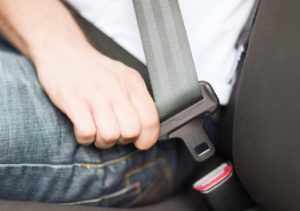Comparative Negligence And The Seat Belt Defense
Insurance companies, like all other business, are really only interested in profits. So, their lawyers will do anything possible to reduce the compensation that car crash victims receive. In a few car crash cases, there is an absolute defense, like last clear chance or sudden emergency, that basically flips liability from the tortfeasor (negligent driver) to the victim. However, these defenses are difficult to prove and only apply in limited situations.
Because of these limitations, it is much more common for insurance companies to shift blame to the victims, with contributory negligence or its subpart, the seat belt defense.
Contributory Negligence
This defense is so common because these situations are very common, especially in car crash cases. For example, a driver may be distracted and not notice that another car made an unsafe lane change. Or, perhaps one driver went through a yellow light and the other one made a rolling right turn on red. In these cases, the jurors must proportionally divide fault between the drivers, such as 50-50 or 80-20 or whatever. Florida is one of only nine pure comparative fault states; some people, particularly those who work for insurance companies, do not like this rule at all, because it is very victim-friendly.
Assume Terry Tortfeasor was intoxicated and faulted for the car crash, and although Vincent Victim was speeding, he was not cited. If the jury divided responsibility 50-50 and set Vincent’s damages at $100,000, Vincent would receive $50,000. However, if the same car crash occurred across the border in Alabama, Vincent would receive nothing. Alabama is a pure contributory negligence state, and if the victim is even 1 percent negligent, the victim receives no damages.
To maximize compensation in these cases, attorneys typically emphasize the victim’s good driving, e.g. obeying the speed limit, maintaining a single lane, sober, alert (not distracted or sleepy), and so on.
The Seat Belt Defense
Like 48 other states, Florida has a seat belt law, and so insurance companies are quick to cite cases like Miami Catering v. Chapman for the proposition that victims who are not properly restrained are responsible for their own injuries. However, the so-called “seat belt defense” is not easy to prove.
- Usage: The insurance company has the burden of proof to show that the victims were not wearing their seat belts, and in serious injury cases, this burden is not easy to meet.
- Nexus: There must be a connection between the failure to use a seat belt and the victim’s injuries. In most cases, that means the insurance companies must find medical experts to testify that the victims would not have been injured if they were wearing seat belts.
- Evidence: Similarly, the insurance company must produce “competent evidence” that is not “speculative or conjectural.”
The same pure comparative fault rules apply to the seat belt defense, so in most cases, the absolute best the insurance company can do is reduce the amount of damages.
Reach Out to Experienced Attorneys
Even if they are partially at fault, car crash victims in Florida are usually entitled to significant compensation. For a free consultation with an aggressive personal injury attorney in Port St. Lucie, contact Eighmie Law Firm, PA. We normally do not charge upfront legal fees in personal injury cases.
Resource:
scholar.google.com/scholar_case?case=5175347826754337345&q=Miami+Catering,+Inc.+v.+Chapman.++&hl=en&as_sdt=6,44



